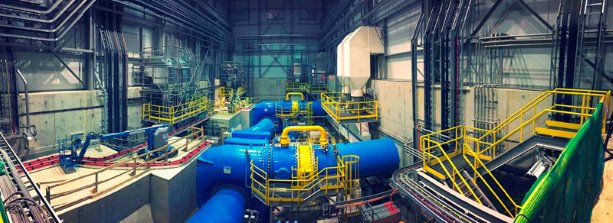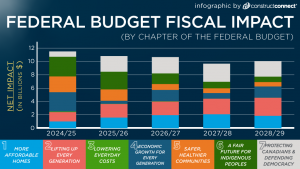Electricity Human Resources Canada (EHRC) has launched a new labour market information (LMI) study that is expected to provide electricity employers, educators and government with up-to-date information and statistics needed to address the labour supply-demand gap.
"We have a couple of big drivers in the electricity industry right now," said EHRC CEO Michelle Branigan.
She cited several industry specific factors will result in rapidly-changing labour force requirements over the next five years, including accelerated growth in renewable energy key sub-sectors; continued high retirement rates of baby boomers; and a heightened focus on carbon reduction and energy efficiency initiatives.
The transformation from "legacy systems" to the "next generation" of infrastructure is also an important factor as it will mean the expansion, replacement and refurbishment of most of Canada’s electricity infrastructure by 2030.
"That’s going to mean a lot of construction jobs," said Branigan. "Construction contractors and their trades have emerged as a key group within our industry so it’s really important that we include those within the resource that we’re doing. Construction in residential may be a little bit down, but we don’t really have a choice when it comes to building for electricity if we’re going to keep the power on."
The national LMI study, entitled Workforce in Motion 2017-2022, is funded in part by the Government of Canada’s Sectoral Initiatives Program and is an update to EHRC’s Power in Motion report released in 2011.
"The last data that we released is almost seven years old at this stage and you really do need to have fairly current and comprehensive labour market information so that all the different groups can plan accordingly," said Branigan.
In a statement, the EHRC noted the data collected will facilitate more effective workforce planning, regulatory filing and organizational planning, particularly as it relates to identifying training requirements to mitigate business risk related to human resource management. The report will also provide government stakeholders with data to assist in the development of policy at the municipal, provincial and federal levels.
While the study focuses on the electrical sector, construction makes up the largest group of non-electrical occupations required to build next generation of infrastructure, Branigan stated.
"Designing and constructing the electrical infrastructure for the future involves most electrical occupations as well as a group of support trades and specialists," explained Branigan. "For example, construction managers and millwrights are among the critical occupations that EHRC surveys within its study."
EHRC collects the data on those two specific trades but they also incorporate the findings from BuildForce Canada’s LMI on the other 12 trades that overlap with the electricity industry.
Stakeholders from industry, education, government, labour and licensing bodies will provide input into the study through a national advisory committee. Stakeholders include the Electricity Distributors Association (EDA)/Burlington Hydro, Ontario Power Generation, Cameco (Canadian Nuclear Association), the National Electrical Trade Council, the College of New Caledonia, BC Hydro, Natural Resources Canada, the Power Workers’ Union, Engineer’s Canada, the Canadian Council of Technicians and Technologists, NB Power and Carleton University.
"We’ve been working on the survey methodology and the tools over the last little while and we’re starting the environmental scan and talking to key informants in September. Over the fall we’ll be doing the actual survey of industry stakeholders," Branigan said.
Jeff Koller, executive director of the Electrical Contractors Association of Ontario, said the association plans to participate in the study with the goal to determine where future efforts should be focused in terms of recruitment and strategies to plan for labour market needs in the longer term.
"Anytime you have labour market data like what they are trying to compile, it can only be a good thing for the industry," said Koller. "It will give us a better idea of where things are demographically. We’ve been hearing for years that we have an aging trade population so maybe this will identify where we need to focus efforts for improvement."
He added, "Without wanting to speak on behalf of our members, we will certainly encourage our members to participate in the study because I think, ultimately, the data that will be collected and the information that will be learned will be helpful to all of us as an industry association and specifically to our members."
The results of the labour market information study are expected late next spring. Preliminary findings will be presented at an EHRC awards event in February.











Recent Comments
comments for this post are closed